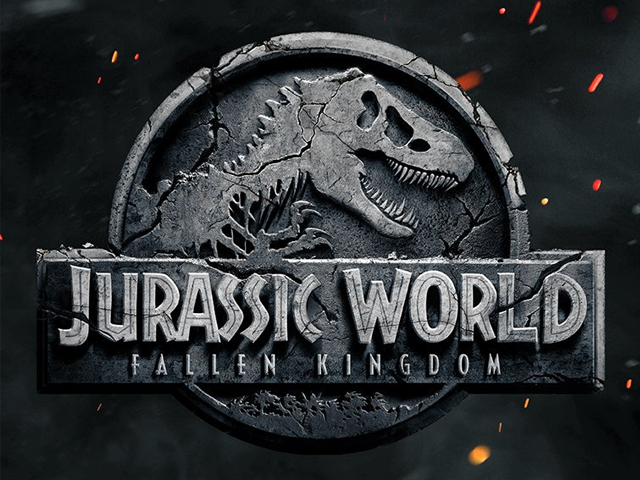
Pakistan's silent drug war taking another hit
In 2007, Pakistan had an estimated 90,000 (injecting drug users) and the number has now risen to around 500,000.
Border skirmishes between India and Pakistan have left numerous civilians dead; the ceasefire violations along the Line of Control (LoC) have been the worst in a decade. And media outlets on both sides of the border are revelling in front pages and headlines about the clashes.
But there is another conflict that continues along one of Pakistan’s borders, and it has impacted about 6.7 million Pakistanis in 2013 alone. Yet, it continues to be neglected from the front pages.
I met one of its victims when I was 15-years-old. The tiny form of an old man, curled into a ball, like a discarded shoe, lay against a wall of Abdullah Shah Ghazi’s shrine. Against the blue and white of the mausoleum’s ancient structure, his darkened sleepy countenance was vivid. I wondered if he ever understood or cared to understand the politics of what he was experiencing.
The Pak-Afghan border, which is 2,640 kilometres long, is Pakistan’s gateway to the narcotics trade. Cannabis and heroin pass through the country on their way to other markets. As a result, Pakistan’s illegal drug trade generates $2 billion annually. According to David Browne’s report, dated March 2014, for The Telegraph,
“Pakistan is the most heroin-addicted country, per capita, in the world.”
This silent war crawled into the shrine that day, and held a frail old man firmly in an iron grip. He was part forgotten, part forlorn and what he perhaps wanted more than anything else was to be left alone. But I had an assignment to do. I had to talk to people at the mausoleum about security issues.
“Excuse me,” I said to him, pen and notepad in hand, “I’m from a school, can I ask you some questions?”
He stirred and turned to face me. In the light of Karachi’s 9am sun, I must have looked like an apparition from his past. But he gave me his toothless smile anyway, and sat up. I didn’t know what to make of it; did he even understand what I was saying? So I sat down beside him,
“I have to write a report for my school, can I ask you some questions?”
Again a toothless smile.
A few seconds later, my friends and chaperons shooed him away, and advised me to interview someone else. Eventually, my article was published, and it focused on the families and children at the mausoleum. In retrospect, I can see how difficult it would have been to convince readers that a drug addict was as much of a victim as a child void of protection.
The impact of drug abuse is not much of a media darling. But this shouldn’t confuse one into thinking that illicit drugs are a recent phenomenon. Muhammad Rafiq’s research was published in 1995 in The Pakistan Development Review regarding drug abuse networking in Pakistan. And it is surprisingly relevant as far as recent developments are concerned. Some of the most abused drugs in Pakistan continue to be heroin and cannabis. More importantly, people abusing drugs are condemned as opposed to condemning the drugs themselves.
Two years after my day at the shrine, I met another addict. A friend of mine casually told me that hash was his favourite pastime.
“Maybe you could talk to someone?” I asked.
I remember his laughing question,
“Talk to who?”
I don’t know if he ever spoke to anyone; he most probably continues to see hash as a hobby more than anything else. But I really can’t blame him. A drug addict in Pakistan is always seen as a criminal, never a victim. If he had asked for help, from teachers or parents, he was more likely to be scolded than aided.
Perhaps this norm goes back to that forced-repenting technique applied by talk show hosts across the country. But this does so much more harm than good, because it ignores the sociological and political factors engulfing people. Opiates from Afghanistan pass through Pakistan, which is far from their last stop but it becomes a hot bed for drugs that slip out of the hands of the traders and law enforcement agencies. The long, porous border between the two countries makes it impossible to stop the inflow of drugs, with reports estimating that 150 tonnes of heroin enters Pakistan annually. The abundance of drug supply makes them cheap enough for anyone to afford. The social issues that continue to rise in Pakistan – from terrorism to domestic violence, to a flailing economy and a faltering job market – make drugs a welcome escape.
And everyone wants to escape, from adults facing issues of unemployment to children from conflicted homes.
When I spoke to my friend about his habit, my questions of why were accompanied with a mixture of sarcasm and confusion. To be honest, I already knew why he did drugs. We lived in the City of Lights, which would turn into a nightmare when the sun would go down. For a young boy, from a middle-class background, everyday life was a test. And drugs offered the much needed escape. When I asked him when he had started taking drugs he said he didn’t remember exactly when but that it had followed a mundane pattern; meet friends, smoke a joint, don’t tell anyone.
As of 2014, Pakistan’s drug habit reached international ears. On October 10, 2014, Al Jazeera published a 25-minutes film titled ‘Drugged up Pakistan’. It begins with a teenager, Shehzad, from Karachi who was exposed to drugs at the tender age of nine, while some of his friends were even younger. What hurts these children is not just the ease with which they can get their hands on drugs, for some this simply entails meeting their friends under a bridge, but also a pivotal part of the problem is the lack of rehabilitation facilities.
Drug dependence is a slow killer, and recovering from it requires lengthy procedures of detox which can lead to painful withdrawal syndromes. Most rehabilitation centres in Pakistan are non-governmental organisations such as the Edhi foundation, the Alleviate, Addiction, Suffering (AAS) Trust, Drug Free Pakistan Foundation (DFPF) and the Milo Shaheed Trust (MST). Their foremost shortcoming is that they can only cover limited grounds. Drugs impact all of Pakistan, and unfortunately, only the central government has access to the whole country.
It has become evident in the past six years that very little in Pakistan is free of corruption, and anti-narcotics regulatory bodies are no exception. According to the Al Jazeera documentary, the Anti-Narcotics Force (ANF) is short of more than one-sixth of needed personnel in Sindh alone. Researchers believe that local law enforcement agencies are involved in the drug trade due to which complete uprooting of the illicit trade border is impossible. In the wake of recent governmental shortcomings, it is no surprise that authorities, to put it mildly, ignore something that relies almost completely on the black market.
But as the illicit industry continues to operate, drugs continue to be insidious killers in Pakistan’s troubled rhetoric. According to an article published in The Diplomat in March 2014, the UNAIDS country coordinator for Pakistan, Oussama Tawil, has gauged an alarming rise in the number if addicts who use intravenous drugs. He said,
“In 2007, Pakistan had an estimated 90,000 (injecting drug users) and the number has now risen to around 500,000.”
This may lead to another deadly epidemic – AIDS.
According to the United Nation Office of Drug Control (UNODC) report 2013 regarding drug use in Pakistan, around 4.25 million drug users in Pakistan were considered dependent on substances and required a form of structured intervention for treatment of their drug use disorder. Drug users injected drugs through syringes; sharing of syringes was among the leading causes of spread of HIV/AIDS and Hepatitis-C.
The picture of narcotics in Pakistan is not pretty; it entails corrupt regulatory bodies, a billion dollar illicit trade, and a population that succumbs to the escape offered by dangerously addictive material.
The solution cannot be undemanding; be it stricter laws over the inflow of drugs or large-scale rehabilitation programs. The government of Pakistan cannot avoid responsibility because laziness has already permitted narcotics to become the beast that it is, we cannot afford for it to become any bigger; if it doesn’t consume us, it will definitely consume the generation after us. There needs to be accountability for perpetrators and help for dependents.
Simultaneously, a change in mind-set, an alteration of attitudes and a collective promise is also required. As people, we must understand what drugs are and how difficult and tempting they can become. In a country where ‘charsi’ continues to be a favourite swearword, we are giving drug addicts little reason to believe that they are better than drug abuse, that they can quit, that they can recover. And this failure on society’s part too needs to be dealt with. While not all of us can shut down a city with a phone call (please feel free to discern who I’m referring to) or pass orders to the police, we can all understand that a country that is recovering from collective trauma needs collective rehabilitation.




COMMENTS (5)
Comments are moderated and generally will be posted if they are on-topic and not abusive.
For more information, please see our Comments FAQ